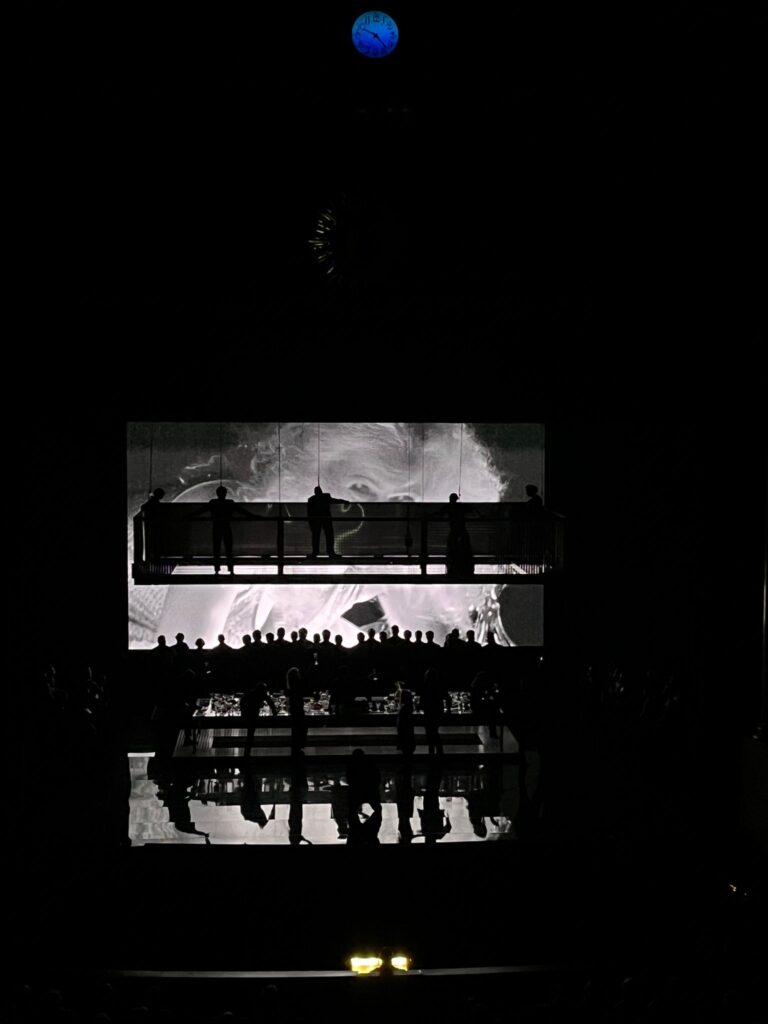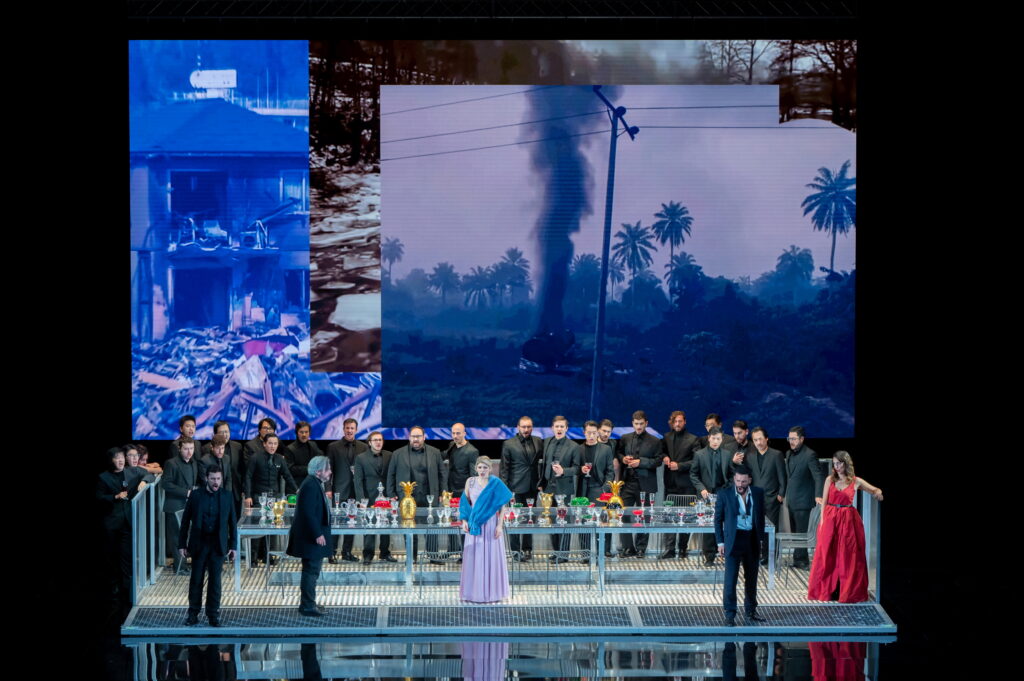
From prototyping in France to wooden structures in Jakarta, ciguë’s practice embodies a growing world
ciguë, with their portfolio of projects around the globe, has created a world within a world. Rooted in their Parisian beginnings, each project carries fragments of the places they’ve worked, building a collective vision that continually evolves. In an interview with NR, founding partners Alphonse Sarthout, Camille Bénard, and Guillem Renard delve into the projects and processes that define the spaces that they create.
We heard that ciguë was founded when you all were in architecture school in Paris. It’s almost as if you’ve grown up in the industry together. How have your relationships evolved throughout the years?
A: When we started, there was no topic we wouldn’t share with each other. In the beginning, we could spend an entire day just talking about one project—this helped us a lot to build a foundation of ideas and understand our direction. After 20 years, we now share a common intuition. There’s much less talking than before and more acting with trust in each other.
C: For some people, there is life and then there is work. We [the partners] never tried to separate these things. Our beliefs from our private lives are applied in our professional lives too. For us, it’s all one and the same: life is research; it’s a playground; it’s also a lot of work.
A: Maybe the biggest challenge is having the team grow beyond the partners—we need to employ people. Many journalists still use the word ‘collective’ to describe us, but really today, we are a company with partners and employees trying to keep up that spirit.
We try not to have any hierarchy in the creative process: but we still work toward collective thinking that goes beyond the architect, contractors, craftsmen, and clients. We’ve tried from the beginning to have everyone around the table, working toward a common idea. We strongly believe that the best projects we’ve done were not just us in a corner having nice ideas—it’s best when we can build relationships.
Your work with Ace Athens is one the firm’s largest projects to date in terms of both scale and scope. The Hotel & Swim Club is a 120-room property with a pool, gallery, and café. Notably, the project works around the renewal of the Fenix Hotel. What was one part of the space that challenged you? One part that inspired you?
A: Ace Athens is actually not the biggest project we’ve worked on, but at the moment, it is the biggest project to be realised and delivered.
A big challenge: The balconies on the façade make the building very particular. The rule was one balcony to one room, so we had to preserve the rooms’ partitions. Additionally, there were legal restraints. If we demolished something in the hotel, we couldn’t rebuild it as a hotel, because current urban planning regulations only permit housing developments.


We also had to find a way to give the exterior a certain elegance. Unfortunately, it was a very fragile structure that required reinforcing the concrete with very specific techniques. When we found the hotel, it had a very 80s-90s style of mixed material with these ugly plastic additions. It was not very inspiring, so we had to strip it to the bone to revive the structure.
C: I see two major things in this rehabilitation. First, it reflects the kind of architect we want to be. Existing buildings are everywhere, and our focus is to take something that’s falling and give it a new life. This belief has guided our company’s history.
Second, once you give life to the rehabilitation, the question then becomes how to connect it to the city and make it embody the place it’s in. We partnered up with a friend of ours, Matthieu Prat, who has spent a lot of time in Athens finding artists in the local scene. This collaboration [which resulted in showcasing the works of 18 Athenian artists in the hotel] was an essential part of this process.


In the Aesop Nashville store, there’s these tall wooden beams with shelves mimicking an ax intersecting a tree. It’s noted here that you were inspired by the American legacy of “first growth pine.” We’re interested in your first interactions with Nashville and what led you to the discovery of this site-specific phenomenon?
G: With our projects, we try and find a way to blend with the locals. We walk through the streets, finding some materiality to ground us. But this is a good question because, being French, it’s not so easy to casually navigate a place like Tennessee.
We ended up finding this guy who was a kind of collector in what seemed to be a sawmill factory. We pushed open the doors to his space and we discovered these crazy old wood beams and dismantled logs from the beginning of the 20th century. They were super nicely refurbished. That’s when we said, “here is our project.” For us, it expressed the historical legacy through a material – we could work with it as a starting point.


C: It brought all these archetypes of America into one gesture, or one scene.
A: What Guillem described is a process we’ve been doing for every project abroad. If the conditions allow it, we request to withhold from designing until we get a chance to be on site for a few days. Of course, it’s not easy to say to the client, “in order to design, we need you to pay for a trip first.” But for us, this is very important.
We did this for Isabel Marant in Tokyo. We spent almost a week walking around the city, going to the harbor, finding factories, people working with local materials. We do all this to get inspired and immerse ourselves in the culture.


C: In general, we don’t want to find ourselves imposing our French culture onto a project. Rather, what interests us is discovering how cultures can blend. That’s where we’re seeking to design from.
Your work is known for its connection to craftsmanship and prototyping. There are a lot of fixtures (including elaborate systems and contraptions) within the Aesop stores that are made by the team at ciguë. Given your emphasis on craftsmanship and custom design, but with a growing international presence, how has your process for creating custom pieces evolved? Are your prototypes still primarily developed in France, or do you now collaborate with local artisans in different regions?
C: Overtime, the tools of architecture have been reduced to the lines on AutoCAD. We didn’t recognize ourselves in this. Our practice was born from the will to make things as well as to design them. We prototype because it’s very evocative and allows us to get rid of words and drawings. So many ideas can be summed up just in one piece.
Sometimes we also use prototypes to discuss with the makers that execute the designs. We’ve found that it’s a super rich and fast way to exchange ideas without language.
A: At the beginning, we were designing and building everything ourselves systematically. When we started to have projects abroad, we were obliged, almost forced, to have our project built by others—at least that’s how we perceived it. But after a few projects, we discovered that collaboration with local makers made the process so much more interesting.
For one of the first stores we did abroad, we built everything here in France. We shipped it, installed it there in three days, and then came back to Paris. It was a challenge. We made it, but then we just realized we couldn’t see the city or meet anyone there. In the end, it was just like any project done in our workshop in France.
One or two years later, we did a project in Tokyo for Isabel Marant. There, we discovered Japanese craftsmanship, and it was amazing. The first meeting we had, we didn’t say anything. We were at a table filled with materials and samples. There was a language barrier, but through the materials, we could see there was a deep understanding between us. After this, we took a bit of distance from systematically building everything ourselves
In the Arabica coffee space in Jakarta (2023), the architecture pulls from both Javanese crafts, traditional Indonesian dwellings, and the heritage of Dutch colonial architecture – all influences that are palpable in the city. I’m interested in understanding the process of building this wooden structure.


G: On this project, carpentry was a big challenge because there is a lot of wood available for use within Indonesia. All the wood from the country is going abroad now for furniture and other uses. They are struggling a lot to keep the material in their territory. Because of this, it was a big challenge for us to get the clients, the engineers, and the other stakeholders to understand the idea behind having a wood building.
We wanted to integrate into the neighborhood’s old wooden construction. This area was a historic neighborhood, and we wanted to emphasize that.
A: Playing with the archetypes of the Javanese house, with its big, airy, ventilated structures, made sense to us. It wasn’t in a nostalgic way. It was more because, if it’s been this way for centuries, then there must be a reason. Unfortunately, with modernity, there have been so many aspects of traditional architecture that have been erased through technology. With air conditioning and concrete as fast building methods, there has been a loss of the specificities of certain architecture that makes it rich.
C: Such as was this case in Jakarta, sometimes we build new buildings. This isn’t a light act for us—we feel a strong responsibility. That’s why we look to invoke a certain culture or link it to local knowledge about buildings.
Working so much in the public-facing retail sector, your spaces have more foot traffic than say an office or private residence. Are there any standout memories you have of the public interacting with your spaces in an unexpected way?
A: I’m reminded of what we did for the Citadium project. It is a department store, mainly for young people, kids, and teenagers. The funny story is that the manager of the place had always been a fan of music and radio, so he decided to create a radio station in the space. The renovation happened during COVID.
G: It was a DJ booth and a welcoming radio station for Rinse, Paris. It plays electronic music and everything on a web radio that’s strongly resonant in the young generation.


A: During COVID, all the clubs in Paris closed, but Citadium was open because of capacity rules. They could still welcome people. This radio station became the only place you could hear live music, DJs and performances. The initial intention to create a radio station is already cool, but then during COVID, it became an important communal place.
In every city, project, and prototype, Ciguë’s work is about a unified voice—not singular, but a composition of many stories, colors, and textures gathered over their years of practice. Reflecting this ethos, in NR’s conversation, Alphonse says, “Throughout our projects, we want to feel like we’re still on the path of discovering who we are. If we realize one day that we’re just repeating the same style because we’re Ciguë and that’s what Ciguë should do, then we just won’t make sense anymore. Every project is a new story. Every project is an occasion to reinvent ourselves and meet new people, new materials, invent ways of doing things.”
Credits
- ciguë architecture, Isabel Marant Store, Tokyo-Omotesando. Photography by Koyo Takayama.
- ciguë architecture, Ace Hotel, Athens. Photography by Pasquale De Maffini.
- ciguë architecture, Aesop Store, Nashville. Photography by Aesop.
- ciguë architecture, Isabel Marant Store, Tokyo-Omotesando. Photography by Koyo Takayama.
- ciguë architecture, Arabica Coffee Shop, Jakarta. Photography by Ricky Adrian.
- ciguë architecture, Citadium, Paris. Photography by Maris Mezulis.
























































